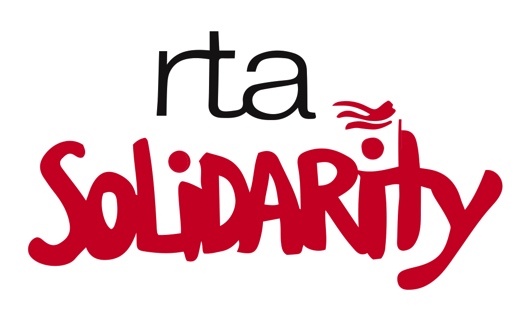ALBANY – The Supreme Court ruling Wednesday that unions cannot collect fees from non-members could have wide implications across New York, which has the nation’s most heavily unionized public sector.
Unions in New York derided the groundbreaking decision by the closely divided Supreme Court as it may weaken their membership, but business groups and union critics applauded the measure.
The decision applied to the legality of “agency fees” that public employees were required to pay, even if they choose not to be a member of a union.
New York’s labor leaders said they will work hard to encourage public workers to continue to pay all fees and dues.
New York has the highest percentage of union workers in the nation.
Gov. Andrew Cuomo responded by signing an executive order Wednesday to keep private the personal information of state employees, such as their addresses and phone numbers, to avoid them being harassed by anti-union groups to stop paying dues.
He said employees’ names, titles and salaries would remain public under the state’s Freedom of Information law.
“In New York, we are going to do everything we can to protect the labor movement,” Cuomo said at a news conference with labor leaders.
Impact in New York
Unions vowed that they would try to keep their ranks — and paying members — intact.
“The Janus v. AFSCME case has always been a thinly veiled attack on the rights of all working people to join together and speak with one voice,” AFL-CIO president Mario Cilento said.
“New York’s labor movement, with 2.5 million members, will remain strong.”
Nonetheless, the decision could infringe on New York’s massive public-union workforce, said the conservative Empire Center, a think tank in Albany.
Overall, New York has by far the largest percentage of union members of any state.
About 1.2 million of New York’s 1.4 million government employees are unionized, collecting $862 million in dues and fees each year, the group said.
The group estimated 200,000 state and local government workers will no longer have to pay the union fees, saving them about $110 million a year.
“With today’s ruling, these workers can no longer be compelled to financially support unions whose political demands they don’t agree with,” the group’s executive director Tim Hoefer said in a statement.
Andy Pallotta, president of the New York State United Teachers union, weighs in on the impact of the Supreme Court’s Janus decision on June 27, 2018. Jon Campbell, jcampbell1@gannett.com
What the ruling means
The ruling could also give union members more latitude on whether to pay dues.
“Neither an agency fee nor any other payment to the union may be deducted from a nonmember’s wages, nor may any other attempt be made to collect such a payment, unless the employee affirmatively consents to pay,” Justice Samuel A. Alito Jr. wrote.
So that could allow New York’s public workers “their full and unfettered constitutional right of freedom of association by choosing whether to opt out of union membership and dues payments,” the Empire Center said.
But unions said they do not expect a significant drop off in membership.
“Anti-union forces think they can seize this opportunity to convince our members to abandon our union in an effort to diminish their voice in the workplace and weaken their strength at the bargaining table,” the New York State United Teachers union said.
“But we are ready for this fight. Our members know that strong unions and collective bargaining are the keys to securing higher wages, quality health care and a secure retirement.”
Union members accounted for over 23 percent of wage and salaried workers in New York in 2016. Nationwide, the average was almost 11 percent, according to the federal Bureau of Labor Statistics.
New York had 1.9 million union members in 2016, second only to California with 2.6 million.
What the case is about
The case is the result of a lawsuit brought by Illinois state government worker Mark Janus, who argued that he shouldn’t have to pay his union, AFSCME, the agency fees because it is funding the union’s political operation as well.
In the 5-4 ruling, the majority of the judges agreed, saying the fees violated the First Amendment.
“We conclude that this arrangement violates the free speech rights of nonmembers by compelling them to subsidize private speech on matters of substantial public concern,” Alito wrote.
Nationally, about 5 million workers could be affected by the decision overruling the court’s 1977 decision in Abood v. Detroit Board of Education, USA Today reported.
More than half the states already had right-to-work laws that banned such mandatory fees. But New York was one of 22 states, including California and Illinois, that allowed the fees.
In anticipation of the court ruling, Cuomo in April signed legislation that allows unions to avoid being forced to provide full benefits to members who do not pay fees or dues.
Rochester Teachers Association President Adam Urbanski said nearly all Rochester teachers have already signed union commitment cards for the 2018–19 school year.
Starting the following year, though, they will have a new choice to make.
“I think that decision will be driven by the level of satisfaction with the union’s work,“ he said.
“Will there be people who try to save the dues money or are unhappy with their representation? Possibly. But I feel very confident the vast majority of Rochester teachers will support their union.“
More: How New York is protecting union fees
More: Corruption trial, Tesla cutbacks cloud $750M taxpayer-funded project in Buffalo
More: 5 takeaways: Upset of Rep. Joe Crowley shakes up House primaries in New York
Includes reporting by Democrat and Chronicle staff writer Justin Murphy.
Link: https://www.democratandchronicle.com/story/news/politics/albany/2018/06/27/janus-decision-what-means-new-york-nations-most-unionized-state/737815002/
